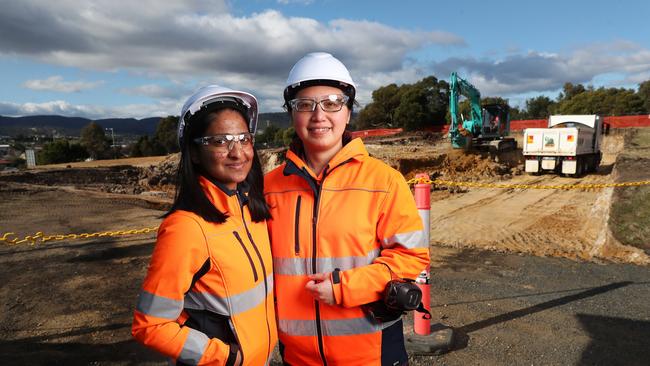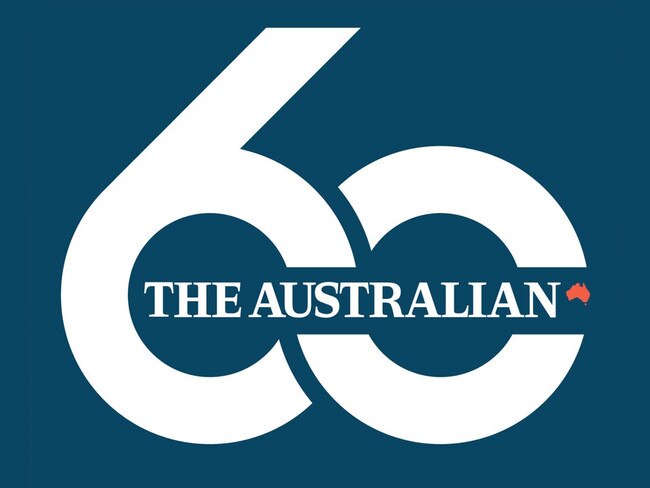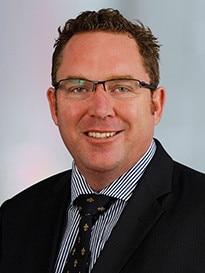How immigration could help Australia reduce debt, boost productivity and counter the ageing population
They study, work, travel and shop – and they’re back. Young foreigners are flooding our arrivals halls, but our immigration settings need to be right.

They study, work, travel and shop – and they’re back. Young foreigners are leaving homes in Asia, South America and Europe, and flooding into the arrivals halls of Kingsford Smith and Tullamarine in record numbers.
In post-pandemic Australia, temporary visa holders are serving guests in cafes and bars, driving ride-share passengers, sitting in classrooms and roaming the country’s sights, typically spending way more than they’ll earn during their stays. If the statisticians’ early projections prove to be correct, Australia is in the middle of a colossal, migration-powered population surge.
In the year to June 2023, the nation added 624,100 people; the natural increase (births less deaths) was an estimated 106,000, with net overseas migration of 518,100. We’ve never experienced a population increase of that size, which is due overwhelmingly to temporary migration – students, backpackers, skilled workers and Kiwis – at a rate of more than 10,000 additional people a week. As the calendar flipped over to November, there were 866,000 foreigners here on student and graduate visas alone. More than two million temporary visa holders have work rights. Many, if not most, of these young people will become permanent residents, such is today’s two-step migration path.

As a proportion of the population, there are now more people living here who were born overseas than at any other time in the past 130 years. Home Affairs Minister Clare O’Neil says we have an ageing population and poor productivity growth, while being in a global war for talent. “As migrants come back, we need to make sure that we get the skills we need, but with better planning across housing, infrastructure and services to make sure our migration system is effective on the ground.”
Australians generally support immigration and its broader social and economic benefits but want to be confident the program is well managed, temporary workers are not exploited and infrastructure is in place to deal with a larger population.

As a first step, the Albanese government increased visa processing capacity to clear a backlog of applications. In a way, that reform effort is boosting the current influx. Education providers, businesses and tax collectors are thrilled, of course, while government planners believe this is simply a catch-up, a post-Covid blip, and normal programming will return within a few years. Others aren’t so sure it’s properly thought through and are warning that this self-selecting people boom is really another disruptive episode of “Big Australia”, where world-leading population growth pushes through the nation’s capacity to provide shelter, transport and social services for everyone who is here. While the ability to attract skilled workers is a great source of comparative advantage for Australia, the Productivity Commission has found migration is neither limitless nor costless and so needs to be carefully rationed.
It’s a delicate time that is testing the nation’s planning and the community’s confidence that governments are in control and that the interests of the local population remain paramount. As former Reserve Bank of Australia governor Philip Lowe explains, while some sectors, such as hospitality, are benefiting from a bigger pool of available workers, the record population surge is pushing up rents and housing prices. “All these people coming in have to live somewhere,” Lowe said in July last year. “Population growth brings huge advantages to the country, but we need governments and businesses to keep investing to build a capital stock to support a stronger population.”
Federal and state responses to stop the spread of Covid-19 put a halt to the Big Australia Express. In the year to March 2021, there was a net outflow of 94,000 foreigners that pushed down annual population growth to 25,000 or 0.1 per cent, the lowest increase in more than a century. Amid the cost-of-living crisis, made worse for many by the central bank’s brutal monetary response to obliterate high inflation, the population rebound has kept the economy afloat and eased labour shortages, particularly in areas where locals are reluctant to toil. But in the year to September 2023, the size of the economy did not expand as much as the population, so we experienced a “per capita recession”. In August’s Intergenerational Report, Treasury argued the pre-pandemic decade of 1.5 per cent annual population growth made the economy larger, kept the population younger, boosted workforce participation, raised productivity growth and would pay a bountiful budget dividend.

It has been a positive surprise for officials, helping to keep cash registers ticking over and people in work. “The migration rebound after the pandemic eased has not been unique to Australia,” the IGR says, adding Canada and Britain have experienced a rush of students and temporary workers.
Treasury estimates that across the three years to June 2025, Australia will experience a net inflow of 1.14 million migrants.

KPMG chief economist Brendan Rynne puts it simply: migration leads to a bigger economy. “More people mean more jobs, so more wages, spending and output,” says Rynne. But as economists term it, there are “externalities” that basic models don’t take into account, that make life less pleasant for the existing population, such as congestion and competition for housing.
The federal government’s housing adviser has estimated that across the coming five years the migration surge will raise the cumulative shortfall in homes to around 200,000 dwellings. In theory, the increased demand will stimulate home-building activity and help the industry to recover from the post-pandemic downturn, made worse by building-material shortages that raised prices and pushed many companies to the wall. But the housing sparsity is likely to be prolonged, with renters paying top prices in an extremely tight market. It can take two years to deliver an apartment building, from council approval to presale and construction. Students may well squeeze in and reverse the pandemic-related decline in household size.
Last May, the Albanese government announced the planning level for the 2023-24 permanent migration program would be 190,000 places, with a 72:28 split between skilled and family visas, slightly down from the 195,000 places the previous year. The latest IGR assumes net overseas migration will stay at 235,000 a year for the next 40 years.
Business groups have called for a higher number of permanent places to fill skills gaps, stimulate growth and make up for the loss of migrants during the pandemic hiatus. KPMG has argued for an extra 265,000 permanent migrant arrivals, in total, across the next five years. If that occurs, by the end of the decade real GDP in 2030 is projected to be almost $30bn higher than in a baseline projection.
KPMG’s Rynne says skilled foreign workers boost productivity, as they bring higher average levels of education and fresh thinking to the workplace, and that helps their colleagues and profitability of enterprises they work in. That is, Rynne says, as long as migrants are able to work in their chosen field, through proper recognition of their qualifications and capability by local authorities and industry bodies.
An OECD study commissioned by Treasury for the IGR found that, between 2011 and 2018, a 10 per cent increase in the share of the overseas-born population in an area increased the labour productivity of Australian-born workers in that area by 1.3 per cent. The Impact of Migration on Local Productivity in Australia also found a one percentage point annual increase in the migrant inflow to an area relative to its population increased Australian-born employment in that area by 0.53 per cent.
Treasury secretary Steven Kennedy says there’s little doubt migration that targets workforce participation raises the supply capacity of the economy and provides a net fiscal bonus. Treasury’s fiscal model known as FIONA shows migrants, especially primary employer-sponsored visa holders, pay more in taxes than they draw from federal and state budgets, benefiting the “incumbent population”. “The composition of the recent increase in migration also puts little pressure on many government services given the age of migrants and family characteristics,” Kennedy said in May. “The importance of migration is primarily through its long-run settings, including skill and age composition, size, absorptive capacity of the community, contribution to GDP per capita, social cohesion, environmental consequences and so on.”
It’s generally accepted that migrants have played an essential role in shaping Australia’s identity and economic prosperity. The most recent census showed almost half of Australians have a parent born overseas.
Canberra’s former top bureaucrat Martin Parkinson says “this is part of the Australian success story and deserves to be celebrated”.
“The contribution of migrants has built the richly diverse, dynamic and multicultural Australia of today,” says Parkinson, who headed a review of the migration system for the Albanese government. “It is no easy feat to incorporate people from all over the world into one country and for the end result to be socially cohesive and economically prosperous.”
But Parkinson’s review found the migration program is not fit for purpose. “The objectives of the program are unclear, and successive governments and policymakers have responded to challenges through piecemeal reforms which have not addressed fundamental underlying issues,” the review said.
“Australia now has a migration program that fails to attract the most highly skilled migrants and fails to enable business to efficiently access workers. At the same time, there is clear evidence of systemic exploitation and the risk of an emerging permanently temporary underclass. Cumulatively, these factors erode public confidence.”
In December, O’Neil launched the federal government’s response to the review, claiming the strategy would attract the most skilled migrants and curb the number of students and temporary workers coming here.
In short, Labor’s new strategy squeezes temporary students and unskilled workers; cracks down on dodgy education providers and their non-genuine clients; raises English language requirements for students; improves mobility for workers on short-term visas; and puts Jobs and Skills Australia at the centre of a tripartite process to determine workforce needs. Planning, in conjunction with the states, business groups and regional bodies, will focus on a longer time, while a looming new “points system” will underpin a policy that encourages permanency.
A headline-grabbing new four-year skills in demand visa will replace the troublesome single-employer-sponsored Temporary Skill Shortage visa that business and unions agree is failing. Officials will screen applicants depending on which of three tiers they’re judged to be in: specialists earning at least $135,000, “core skill” workers (paid no less than $70,000) and a yet-to-be-determined “essential” class of low-paid migrants. Top talent will get a seven-day turnaround (on average) in processing. Wage thresholds will be indexed.
Parkinson reckons fixing a system debauched by deliberate, decade-long policy neglect will require a “10-year rebuild”, while the business lobby believes the revamped system will need much better data to identify skills needs and ongoing policy tweaks to adapt to structural big changes such as artificial intelligence, the energy transition, human services needs due population ageing and digital innovation.
O’Neil concedes the migration system is back-to-front, favouring low-skilled temporary entrants and discouraging the highly skilled workers and innovators who want to make their home among us. “The first problem we have to solve is to get migration levels back to sustainable, normal levels,” O’Neil argued in our pages last month after launching the new road map.
“Numbers were always going to surge post-pandemic, but we cannot sustain the levels of migration we have seen in recent years … There is a big prize at the end of this: we are a great country, with a broken migration system. Imagine what we will achieve when we get this powerful engine working again.”
The stakes are high. If we get migration right, even half-right given our recent history, dividends will flow immediately in coming years. More of the same seat-of-the-pants policy will further imperil average living standards and elicit a broad, dispiriting backlash.




To join the conversation, please log in. Don't have an account? Register
Join the conversation, you are commenting as Logout